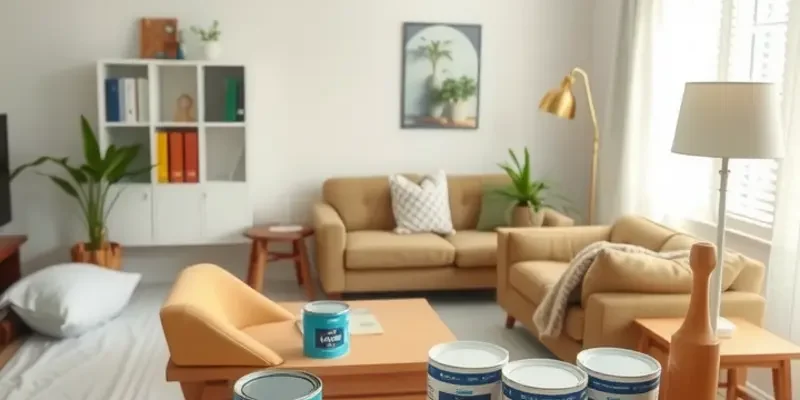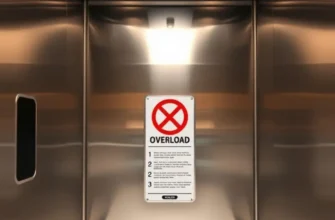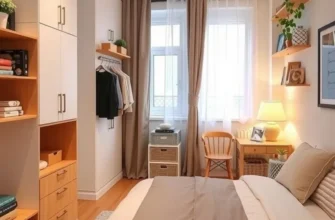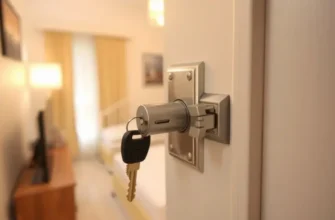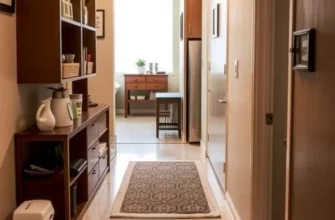Painting can breathe new life into your apartment, allowing you to express your unique style. However, for renters, the prospect of painting may come with concerns about damage, landlord restrictions, and safety standards. Understanding safe apartment painting practices is essential for a seamless experience, one that maintains your apartment’s integrity while adhering to your lease agreement. By prioritizing safety and security, you can enjoy the transformative benefits of a freshly painted space without the constant worry of potential issues arising later. This guide will equip you with practical tips and techniques to ensure a safe and efficient painting process, giving you peace of mind whether you’re working on a small accent wall or tackling an entire room. Get ready to grab your paintbrush and create a home that truly reflects your personal style, knowing that you’re taking all necessary precautions for both yourself and your living environment.
Preparing for a Hassle-Free Painting Experience
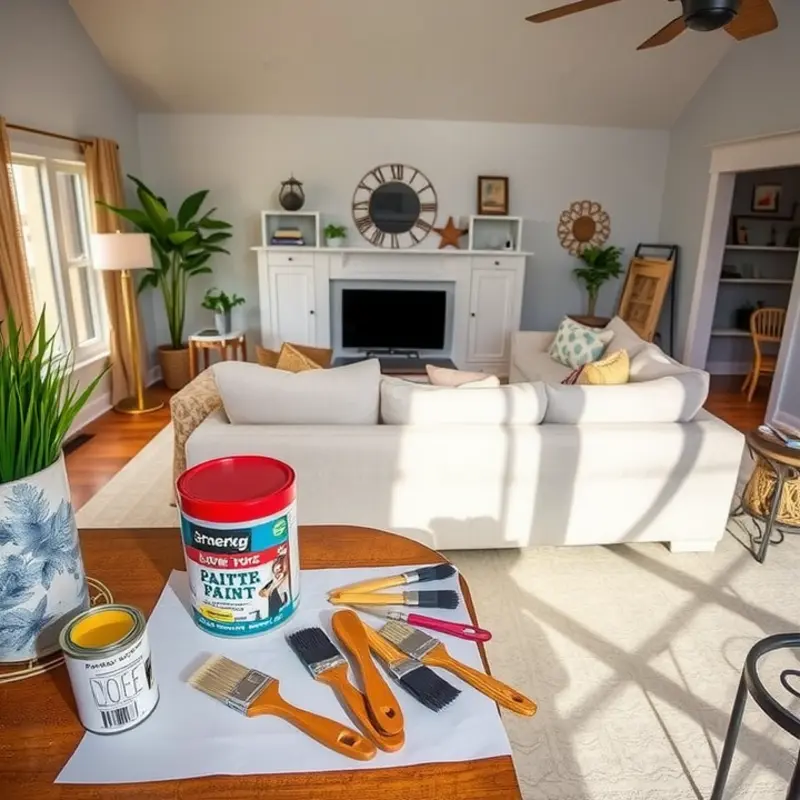
Before breaking out the brushes, preparation ensures your painting project is smooth and trouble-free. Start by scrutinizing your lease agreement for any specific clauses about painting. Some landlords may prohibit painting, while others might outline color restrictions or require prior approval. Understanding these guidelines is crucial to avoid potential lease violations, which you can learn more about here.
Equipped with permission and any necessary approvals, rate your apartment for safety. Clear all furniture and obstacles from the painting area. This prevents tripping hazards and paint splattering on your belongings. Cover floors with drop cloths or plastic sheeting, securing them with painter’s tape to prevent slipping. This step ensures clean surfaces post-project with minimal cleanup effort.
Safety should be paramount. Ventilate your apartment adequately by opening windows and using fans during painting. This helps disperse fumes and accelerates drying time. Ensure working smoke detectors are installed and consider wearing a protective mask, especially if using oil-based paints, which emit stronger fumes than water-based alternatives.
Selecting the right materials is pivotal. Opt for paints and primers labeled as low or zero volatile organic compounds (VOCs). These are healthier for you and eco-friendlier. Check that any tools you’ll be using, like ladders or rollers, are in proper condition. Faulty equipment can cause accidents or uneven paint application.
Take time in choosing paint colors that not only reflect your style but are also in keeping with any stipulations in your lease. Test a small area to see how it looks as lighting changes throughout the day in different rooms.
Additionally, plan your painting project logically. Tackle the project one room or area at a time, allowing each section to dry before moving furniture back into place. Use a strategic order, like starting with ceilings, then walls, followed by trim work. This helps maintain a seamless workflow and keeps the project from becoming overwhelming.
To protect surfaces from potential damage, shield anything you do not plan to paint. Taping window frames, baseboards, and door frames well is key to sharp edges and a professional-looking finish. Make sure you cover switches and outlets with tape too to prevent electrical hazards.
Being diligent in preparation ensures that painting your apartment can be a rewarding and satisfying DIY endeavor without causing unnecessary disruptions or stress.
Executing a Safe and Effective Paint Job
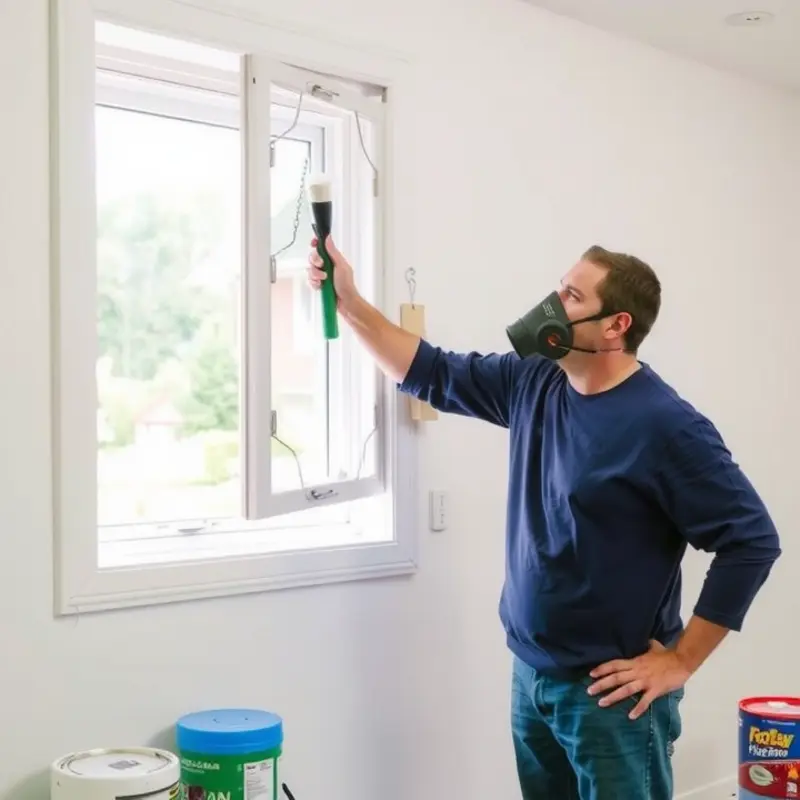
You’ve set the stage for your painting project and now it’s time to dive in. While painting can transform your space, it’s essential to approach the task with safety and efficiency in mind. Start by ensuring proper ventilation in the area to manage paint fumes effectively. If possible, open windows or doors to facilitate airflow. Employing fans can also help circulate the air and minimize fumes. Remember, prolonged exposure to paint fumes can lead to headaches and dizziness, so take regular breaks for fresh air.
When painting walls or ceilings, working from the top down is most effective. This technique minimizes drip marks and ensures a smooth finish. When using rollers, apply even pressure and roll in a ‘W’ pattern to distribute paint uniformly across surfaces. If painting trim or edges, use smaller brushes for precision and keep a damp cloth nearby to quickly clean any stray strokes.
Safety should be your top priority, especially when navigating ladders for hard-to-reach areas. Ensure that your ladder is stable, placing it on a flat surface, and always follow the three-point contact rule: two hands and one foot, or two feet and one hand, on the ladder at all times. Overreaching can result in accidents, so move the ladder as needed to avoid precarious positions.
Once your masterpiece is complete, transitioning to clean-up mode is crucial. Start by sealing paint cans properly to prevent spills and odors. Use a plastic wrap or rubber band around the can’s edge before securing the lid to maintain an airtight seal. For paintbrushes and rollers, thorough cleaning depends on whether you’re using oil-based or water-based paint. Water-based paints require only soap and water for cleanup, while oil-based paints require specific solvents. Properly labeled disposal bins in the apartment complex can safely handle paint waste.
Maintaining an immaculate living space throughout this process is possible with the right approach. Use drop cloths or thick plastic sheets to protect floors and furniture from paint splatter. Once the painting is finished, fold these coverings inward to trap any leftover debris before disposal. For lingering odors, activated charcoal or baking soda in bowls around the apartment can help absorb smells over a few days.
By following these safe and effective techniques, you can successfully complete your painting project without compromising on comfort or safety. As a renter, it’s prudent to remain cautious of potential lease violations when altering your apartment. To learn about navigating lease terms, such as painting permissions, you might find insights here on common lease violations. Keep these practices in mind, and your apartment’s refreshed appearance will be safe and compliant, enhancing your personal sanctuary.
Final words
By following these safe apartment painting practices, renters can confidently transform their living spaces while ensuring they remain compliant with their lease agreements and protect their apartment’s condition. Preparation is just as important as execution; each step you take helps minimize potential hazards and maximizes the aesthetic outcome of your project. Emphasizing safety, you create an environment that reflects your taste and assures security in your rented home. Armed with these guidelines, you’re now ready to tackle your painting venture with all the necessary precautions. Happy painting!

